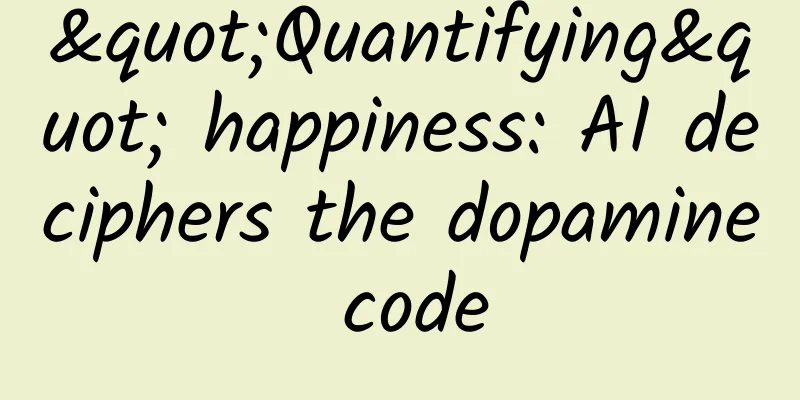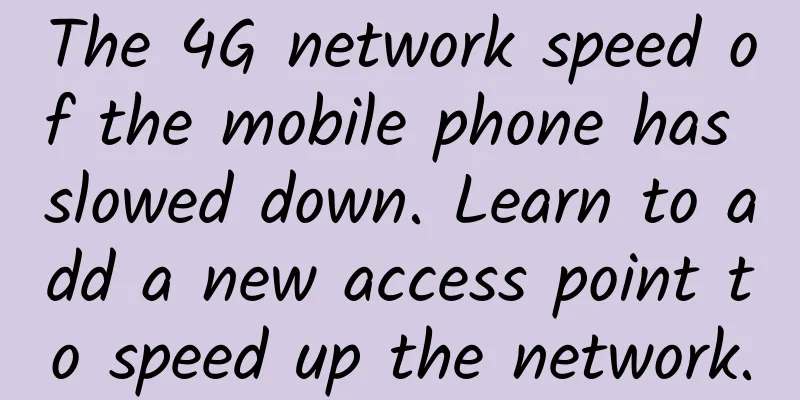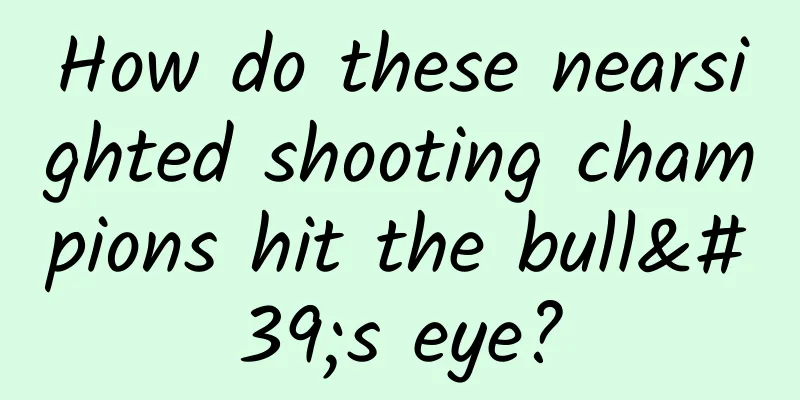"Quantifying" happiness: AI deciphers the dopamine code

|
Content at a glance: Dopamine is an important neurotransmitter in the nervous system, closely related to movement, memory, and reward systems. It is a messenger of happiness. When we see something pleasing, dopamine is secreted in the body, inducing us to pursue it. However, accurate quantitative analysis of dopamine is still difficult to achieve. With the help of machine learning, the research group of Markita P. Landry at the University of California, Berkeley (UCB) conducted a quantitative analysis of the amount and location of dopamine release, bringing us one step closer to the code of happiness. Keywords: machine learning, reinforcement learning, dopamine Author: Setsuna Editor|Sanyang This article was first published on the HyperAI WeChat public platform . We are often asked such a question: "Are you happy?" After reviewing our recent life situation, we may be able to give a relatively satisfactory answer. However, it is not so easy to answer another question about happiness: "How happy are you?" We can make a relatively accurate judgment of right and wrong about happiness, but it is difficult to make a quantitative analysis of happiness. We can only make a rough assessment using some adverbs of degree. But from a physiological point of view, the degree of happiness can be judged by the hormone levels in the human body, one of the important hormones is dopamine . Figure 1: The four hormones that make people feel happy are dopamine, endorphins, oxytocin and serotonin from left to right. Dopamine is an important neurotransmitter in the nervous system, responsible for transmitting messages between cells . Dopamine is a messenger of happiness. When we see something pleasing, the brain releases dopamine, prompting us to pursue happy things. Therefore, a neural circuit controlled by dopaminergic neurons is also called a reward circuit, which is closely related to learning, memory, and addictive behavior. Although people have a relatively clear understanding of dopamine's chemical structure, distribution area and physiological effects, their understanding of dopamine's mechanism of action at the cellular and molecular levels is still not very clear, and it is even more difficult to accurately quantify the role of dopamine in neural circuits . "Quantifying" happiness: AI deciphers the dopamine code In 1997, Schultz et al. proposed a possible mechanism for the operation of the reward circuit, the reward prediction error hypothesis . This hypothesis holds that dopaminergic neurons adjust the release of dopamine based on the error between expected rewards and actual rewards, thereby adjusting people's motivation to pursue something. In 2020, DeepMind discovered that different neurons in the brain have different reward expectations for the same stimulus . In other words, there are relatively optimistic neurons and relatively pessimistic neurons in the brain. Faced with the same half glass of water, optimistic neurons will think that there is still half a glass of water, and our future is bright. Pessimistic neurons will think that there is only half a glass of water left, and we are dying of thirst. And further research shows that the distribution of neurons' expectations of rewards is basically consistent with the distribution of actual rewards. Figure 2: Expected reward (blue) and actual reward (grey) of a neuron. With the help of AI, the analysis of the neural mechanisms of reward circuits is accelerating . In 2021, Erin S. Calipar's research group at Vanderbilt University (Vandy) in the United States monitored changes in dopamine content in organisms and used support vector machines (SVM) to predict the behavior of organisms. Based on the experimental results, the research group proposed a new model for dopamine regulation of physiological activities. Recently, AI has taken its interpretation of dopamine to a higher level. With the help of machine learning, the research group of Markita P. Landry at the University of California, Berkeley (UCB) has conducted a quantitative analysis of the amount of dopamine released and the brain areas where it is released, providing new ideas for the study of neuroimaging and neural circuits . The related research has been published in ACS Chemical Neuroscience, titled "Identifying Neural Signatures of Dopamine Signaling with Machine Learning". Figure 3: The research results have been published in ACS Chemical Neuroscience This study mainly addressed two issues: 1. Distinguish the amount of dopamine released under different stimulations (0.1 mA and 0.3 mA current stimulation); 2. Determine the brain area where dopamine is released (dorsomedial striatum DLS and dorsomedial striatum DMS). First, they labeled dopamine with near infrared catecholamine nanosensors (nIRCat). After labeling, dopamine will emit fluorescence under an infrared microscope, and the fluorescence intensity is positively correlated with the dopamine concentration. After applying electric current stimulation to the brain, the brain will release dopamine and then recycle it. This process will leave a fluorescence intensity curve under the infrared microscope . By quantifying the fluorescence curve, 8 statistical features can be obtained, such as the average fluorescence intensity, the number of dopamine release sites (ROI, regions of interests), etc., and 2 time features, including the duration of fluorescence intensity above and below 2 times the standard deviation. These feature values can be used to train machine learning models. Figure 4: nIRCat labeling results for dopamine A: Fluorescence results observed before and after current stimulation B: Fluorescence intensity curve before and after current stimulation The researchers used two models, support vector machine (SVM) and random forest model (RF), for training and analysis respectively . The SVM model can classify the results into two categories based on complex nonlinear features and apply the boundary conditions obtained through training to the test data. The RF model consists of multiple decision trees, and the decisions made by each decision tree are finally sorted together to obtain the final output result. The RF model can fully interpret the variables in the results to ensure accurate predictions. By randomly selecting data and features, it reduces the sensitivity of the decision tree model to the original training data and increases the differences between decision trees. Both models require a smaller amount of training data and can separate the results into two categories, which matches the purpose of this study. Figure 5: Machine learning workflow Data Set A and Data Set B : represent different current stimulation or dopamine release concentration in different brain regions. After the two models are trained, the fluorescence intensity curves obtained under different current stimulations are used as input, and the models can judge the intensity of stimulation and the brain area where dopamine is released. Figure 6: Machine learning results for different stimulus intensities Figure A: Judgment results of 4-week-old mice Figure B: Judgment results of 8.5-week-old mice Figure C: Judgment results of 12-week-old mice The results show that as the age of the mice increases, the accuracy of the two models in judging the intensity of stimulation increases . This is mainly because as the age of the mice increases, their hormone levels gradually stabilize and are easy to predict. In 12-week-old mice, the RF model can judge the intensity of stimulation with an accuracy of 0.832. Figure 7: Under 0.3 mA current stimulation, the accuracy of machine learning in judging the dopamine release brain area (left) and the importance of different features to the judgment accuracy (right) C&D: Results of 8.5-week-old mice E&F: Results of 12-week-old mice As can be seen from the figure, similar to the results of stimulation intensity, machine learning has the highest judgment accuracy on 12-week-old mice, up to 0.708. At the same time, different input features will also affect the judgment accuracy of the model. Among the different feature parameters, ROI is the most important for the judgment accuracy of the model . Through machine learning, researchers have broken the constraints of traditional data analysis, selected a large number of feature variables, and improved the model's judgment accuracy through feature ROIs that are ignored by traditional data analysis. In addition, this model can also be extended to neural circuits other than dopamine, providing new ideas for the study of neural imaging and neural mechanisms. Dopamine: The double-edged sword of happiness and loss Dopamine can bring us a pleasant feeling and motivate us to pursue happy things. Whether it is delicious food, beautiful scenery, proper exercise or active social interaction, it helps release dopamine, thus helping us maintain a good mood . Because of this, dopamine can also be used as a marketing tool for businesses. From beautifully packaged "dopamine catering" to the "dopamine dressing" that has swept social media, bright colors not only embellish people's lives, but also brighten people's moods. Figure 8: Dopamine outfit by UP host "Kang Kang and Grandpa" However, after being happy, the dopamine level in the body will temporarily drop below the normal level, which will bring a sense of depression. After long-term and frequent secretion of dopamine, the human body's perception of happiness will become dull, making it difficult for people to appreciate the beauty of life and more likely to become lost. Therefore, some people have proposed the concept of "dopamine withdrawal", which controls the release of dopamine in the body by adjusting work and rest, controlling entertainment time, and staying away from social media, so as to return to life and experience real happiness. Whether it is "dopamine dressing" or "dopamine withdrawal", everyone is pursuing the beauty of life and making themselves happy. Although the two theories have certain physiological basis, the actual effect still needs to be studied. With the help of AI, scientific researchers are also constantly exploring the mechanism behind neural activity and exploring the mystery of dopamine. I believe that one day, when asked "how happy are you", people will be able to answer without hesitation, 100%. This article was first published on the HyperAI WeChat public platform . Reference articles: [1]https://www.nature.com/articles/s41586-019-1924-6#additional-information [2]https://www.sciencedirect.com/science/article/pii/S096098222101188X [3]https://www.science.org/doi/10.1126/science.275.5306.1593 [4]https://prezi.com/gxadjg6gz7li/nicotine-and-the-brain-reward-system/ [5]https://youtu.be/v6VJ2RO66Ag |
<<: In order to avoid using pesticides, they plant wild flowers in farmland?
>>: What is quantum artificial intelligence? (Part 1)
Recommend
The incident happened in the early morning! The man lit a mosquito coil and almost got into trouble...
In summer, mosquitoes are particularly active Buz...
What adjustments can be made if advertising volume is not reaching the target?
01. The advertising volume is not satisfactory, a...
How much does it cost to make a Liaoyuan hotel mini program? What is the quotation for making Liaoyuan Hotel Mini Program?
There are two types of Liaoyuan Hotel WeChat appl...
Understand Toutiao’s information flow ads in one article!
As the largest information flow platform at prese...
Mercedes-Benz factory workers to strike again after talks fail
According to Reuters recently, on November 24, wo...
What is considered advanced Android? I suggest you master these points
Is Android development dead? [[277440]] Many peop...
WeChat's new easter egg emojis are being criticized: the whole screen is filled with "shit explosions"
Not long ago, the iOS version of WeChat was updat...
Mixed positioning has hidden dangers, power reduction is confirmed, and the future of Citroen C4 Capgemini's listing is uncertain
On November 1, the first model of SAIC-GM-Wuling ...
Get both power and fuel consumption. If you buy Changan CS75, choose the cost-effective 1.5T model.
When it comes to domestic compact SUVs priced aro...
The small Antarctic krill is actually a "gold mine" in the sea?
Under the Antarctic glaciers, there are rich and ...
Buying a Tesla for the price of an Accord? It's not a pipe dream
As expected, Tesla will release the much-anticipa...
How do Tik Tok creators make money? Personal operation of Douyin skills and practice
Nowadays, more and more Douyin users are making m...
SEM bidding hosting service content
The content of SEM bidding hosting provided by Ku...
Apple releases dual system update!
This morning, Apple pushed the iOS 17.1 Beta 3 up...
How to earn 3,000 yuan a month by doing Pinduoduo for 2 hours a day
How to earn 3,000 yuan a month by doing Pinduoduo...









